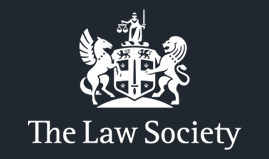By Paul Hampson CEO and Expert Fraud Solicitor CEL Solicitors
Overview
The recent ruling in D’Aloia v. Persons Unknown & Others [2024] EWHC 2342 (Ch) is shaping up to be one of the most pivotal cryptocurrency-related court decisions of the year. The claimant’s inability to present robust blockchain tracing evidence led to the ultimate failure of his efforts to recover stolen assets. This judgment not only highlights the challenges of crypto tracing but also sets new standards for the methodologies used in tracking misappropriated digital assets.
Earlier in this case, a landmark decision was made approving the use of NFTs for serving legal proceedings [2022] EWHC 1723 (Ch).
Case Background
The claimant was defrauded of around £2.5 million worth of Tether (USDT) by an online platform, “td-finan,” which falsely claimed affiliation with the well-known brokerage TD Ameritrade. Unbeknownst to the claimant, td-finan was a scam, and his funds were quickly laundered through a series of blockchain wallets before being converted to fiat currency.
The claimant sought to recover his funds by filing claims for unjust enrichment and constructive trust against various cryptocurrency exchanges, including Bitkub, a Thailand-based exchange. The case centred on Bitkub after other claims were either settled or in summary judgment stages.
Interestingly, the claimant’s case against OKX was dismissed before the trial, after the blockchain analysis expert revised their stance and agreed with OKX’s tracing findings that the stolen USDT had not entered the identified wallet. The same expert, however, was responsible for tracing funds to Bitkub in the trial.
Key Claims
Constructive Trust
The claimant argued that Bitkub held the stolen USDT in trust for him since the fraudsters could not legally claim ownership. While the judge acknowledged that a constructive trust could exist in principle, it was not applicable to the facts of this case. Although the fraudsters behind td-finan may have held the USDT under a constructive trust, the claimant’s analysis failed to establish that Bitkub ever received his funds.
This trust claim echoed a similar case, Piroozzadeh v Persons Unknown [2023], in which a claimant initially secured an injunction to freeze stolen assets on Binance. However, the injunction was later lifted when Binance successfully argued that they were a bona fide purchaser. Bitkub, also using a similar omnibus wallet system, could not rely on the same defence due to evidence that it knowingly facilitated transactions linked to money laundering.
The judge rejected the claimant’s constructive trust claim for two main reasons. First, the blockchain tracing evidence was insufficient to prove that Bitkub ever held the stolen funds. Second, even if the funds had been traced to Bitkub, they had already been withdrawn, meaning there was no asset left to apply a constructive trust.
Unjust Enrichment
The claimant also put forward a case for unjust enrichment. However, they failed to meet one of the core requirements: proving that Bitkub had benefited at their expense. As their blockchain tracing analysis fell short, the unjust enrichment claim could not be substantiated.
Tracing Methods Explained
The judgment shed light on the intricate methodologies used in tracing assets on the blockchain. The court distinguished between “following” (tracking the same asset) and “tracing” (identifying new assets that replace the original). Both processes can be employed in crypto asset recovery, but each has its limitations.
In this case, the judge ruled that USDT could theoretically be followed, even when mixed with other assets, due to internal ledger records kept by Tether Limited. However, since the claimant did not present these records as evidence, they could not rely on this method.
The claimant attempted to use equitable tracing, as common law tracing does not allow for the tracking of mixed funds. However, despite being able to trace through mixed funds under equity, the expert’s analysis was deemed unreliable.
Criticism of Tracing Evidence
The court’s ruling was heavily influenced by the flawed blockchain tracing analysis presented by the claimant’s expert. Initially, the expert submitted two reports using different blockchain analysis tools, but the results were inconsistent. The judge highlighted the expert’s failure to provide clear, consistent evidence and criticised their reliance on “customer FIFO,” a subjective methodology, instead of the established FIFO (First In, First Out) approach.
Moreover, the judge pointed out that the expert seemed to favour the claimant, which further undermined the credibility of their evidence. Ultimately, the claimant’s inability to trace the stolen USDT to Bitkub proved fatal to their case.
Significance of the Judgment
This case represents the first time that a court in this jurisdiction has scrutinised cryptocurrency tracing evidence following a fully contested hearing. In most crypto-related cases, claims are filed against anonymous fraudsters, and are rarely contested, allowing tracing analysis to go largely unexamined. However, this case exposed significant shortcomings in the claimant’s tracing efforts, providing a wake-up call for legal professionals working in the field of cryptocurrency recovery.
Moving forward, practitioners will need to exercise greater diligence when preparing blockchain tracing evidence, as courts will likely subject such analyses to closer scrutiny. This case also underscores the importance of presenting comprehensive pleadings and robust evidence, as demonstrated by the failure to introduce key records from Tether Limited, which might have bolstered the claimant’s claim.
In conclusion, while this judgment serves as a cautionary tale, it also highlights the evolving complexities of crypto-tracing and recovery, setting new standards for future cases in this rapidly developing field.
Read the High Court Decision.













